Are you considering a trade school to kickstart your career? Trade School 101: Your Essential Admission Checklist is here to guide you through the process. This article outlines key admission requirements, explores various types of trade schools, and highlights the benefits of vocational training. With less stringent admissions compared to traditional colleges, trade schools offer a practical path to gain valuable skills and enter the job market swiftly.
1. Understand Minimum Age Requirements
Trade schools typically have minimum age requirements that applicants must meet before applying. While most institutions require candidates to be at least 18 years old, some may consider younger applicants, particularly advanced juniors and seniors, on a case-by-case basis. Minors often need a parent or legal guardian to sign a permission form to enroll, ensuring parental involvement in the decision.
In addition to age requirements, many trade schools expect candidates to possess a high school diploma, GED, or proof of completion of a recognized home school program. However, partnerships between high schools and trade schools may allow for waivers of this requirement. Individuals without a diploma can still pursue trade education under specific conditions, such as qualifying for alternative career pathway programs, which may include entrance exams or skills assessments to evaluate their readiness.
2. Gather Educational Credentials Needed
Trade schools often set a minimum age requirement for applicants, typically around 18 years old. However, some institutions may consider younger candidates, starting as early as 14, depending on individual circumstances. This flexibility allows a broader range of students to pursue vocational training.
Most trade schools necessitate that applicants possess a high school diploma, GED, or evidence of completing a recognized home school program. In certain cases, schools may accept individuals without a diploma if they demonstrate proficiency through a federally approved basic skills test or by completing specific course credits from alternative programs.
To assess applicants’ readiness, many trade schools require standardized testing to evaluate skills in reading, writing, and math. Additionally, some institutions may implement entrance exams or skills assessments to ensure candidates meet the necessary proficiency levels in relevant subjects, streamlining the admissions process.
The application process for trade schools is generally more straightforward than that of four-year colleges. While an application fee is often required, it is usually nonrefundable. Supporting documents, such as transcripts and letters of recommendation, may be requested, along with a personal statement or essay, if applicable.
3. Research Standardized Testing Policies
Researching standardized testing policies is crucial for prospective trade school students. Many institutions require proof of standardized test completion, which serves as a benchmark for assessing students’ knowledge in essential areas such as reading, writing, and math. Understanding these requirements can help applicants prepare effectively and enhance their chances of admission.
Standardized test scores play a significant role in the admission process for trade schools. They not only assist admission boards in evaluating a student’s academic readiness but also help in determining the most suitable program track for each individual. In some cases, schools may prioritize applicants with relevant prior knowledge or training, making it essential to be aware of specific requirements.
While many trade schools do not mandate SAT or ACT scores, achieving good results can provide advantages, such as waiving placement exam requirements. Additionally, some institutions may require entrance exams or skills assessments to gauge a student’s proficiency in relevant areas. Familiarizing oneself with these policies can streamline the application process and ensure a smoother transition into trade school.
4. Prepare for Entrance Exams
Preparing for entrance exams is a crucial step for prospective trade school students. Many institutions require candidates to demonstrate their proficiency in essential subjects like reading, writing, and math through standardized tests. These assessments help admission boards evaluate an applicant’s readiness for the program and ensure they possess the necessary skills to succeed in their chosen field.
In addition to entrance exams, applicants may need to submit supporting documents such as:
- transcripts
- personal statements
- letters of recommendation
While the application process for trade schools is generally more straightforward than that of four-year colleges, it still requires careful preparation. Understanding the specific requirements of each school, including any application fees and potential campus visits, can significantly enhance a candidate’s chances of acceptance.
5. Complete Application Forms Accurately
Completing application forms accurately is crucial for trade school admissions, which often have less stringent requirements than traditional colleges. Applicants typically need a high school diploma or equivalent, and some may enroll without one under specific conditions. Supporting documents, application fees, and possibly personal statements or letters of recommendation may also be required.
6. Submit Supporting Documents Promptly
Submitting supporting documents promptly is crucial in the application process for trade schools. Many institutions require various documents, such as transcripts, diplomas, and certificates, to assess an applicant’s qualifications. Delays in submitting these materials can hinder the evaluation process and potentially affect admission decisions.
In addition to academic records, trade schools often request personal statements or essays that reflect an applicant’s motivations and goals. Letters of recommendation from teachers or employers may also be necessary to provide insight into the applicant’s character and work ethic. Being proactive in gathering and submitting these documents can enhance an applicant’s chances of acceptance.
- Many trade schools accept both virtual and paper applications.
- An application fee is typically required and may be nonrefundable.
- Personal statements or essays are commonly requested.
- Letters of recommendation from credible sources may be necessary.
- Campus tours or meetings with admissions counselors can be part of the process.
7. Explore Financial Aid Options
Exploring financial aid options is crucial for prospective trade school students. Many institutions provide various forms of financial assistance, such as federal student loans, scholarships, and grants. Completing the Free Application for Federal Student Aid (FAFSA) is an essential step to assess eligibility for government aid, making education more accessible and affordable.
Trade school programs often present a more cost-effective alternative to traditional four-year colleges, which can lead to reduced student loan debt. However, financial aid opportunities can differ based on location and the specific policies of each trade school. It’s important for students to research and understand the available options to make informed decisions about their education financing.
8. Schedule Campus Visits or Interviews
Scheduling campus visits or interviews is an essential step in the trade school admissions process. Many institutions encourage prospective students to tour the campus or meet with an admissions counselor to discuss their goals, financial needs, and scheduling options. This personalized interaction helps applicants understand the school’s environment and requirements, making the admissions process more straightforward compared to traditional four-year colleges.
In conclusion, applying to trade school can be a more accessible alternative to traditional college admissions. Generally, candidates need a high school diploma or GED and must be at least 17 years old, though some may qualify earlier with parental consent. By researching schools and their programs, you can ensure a successful transition into a rewarding career in the trades.



